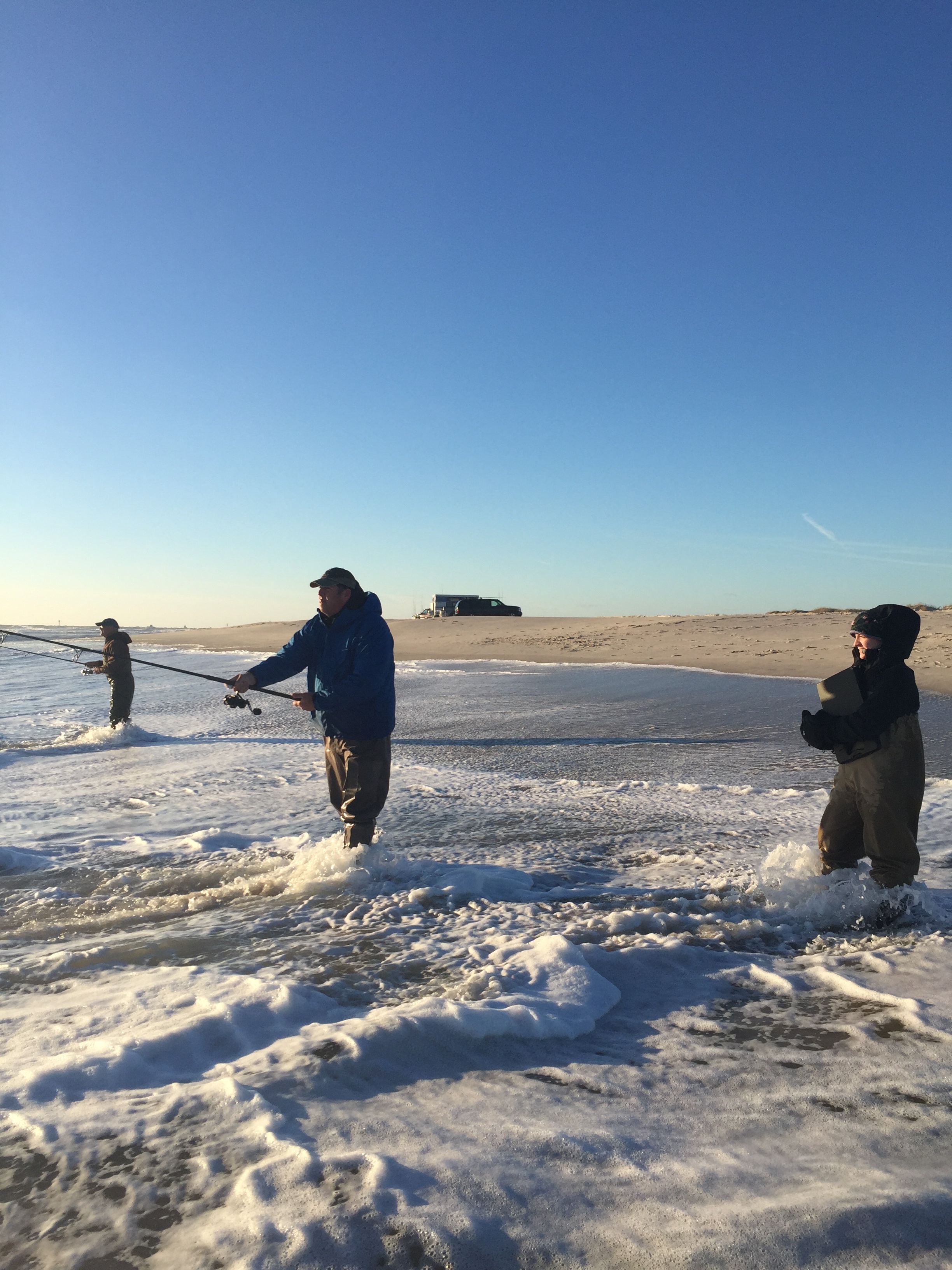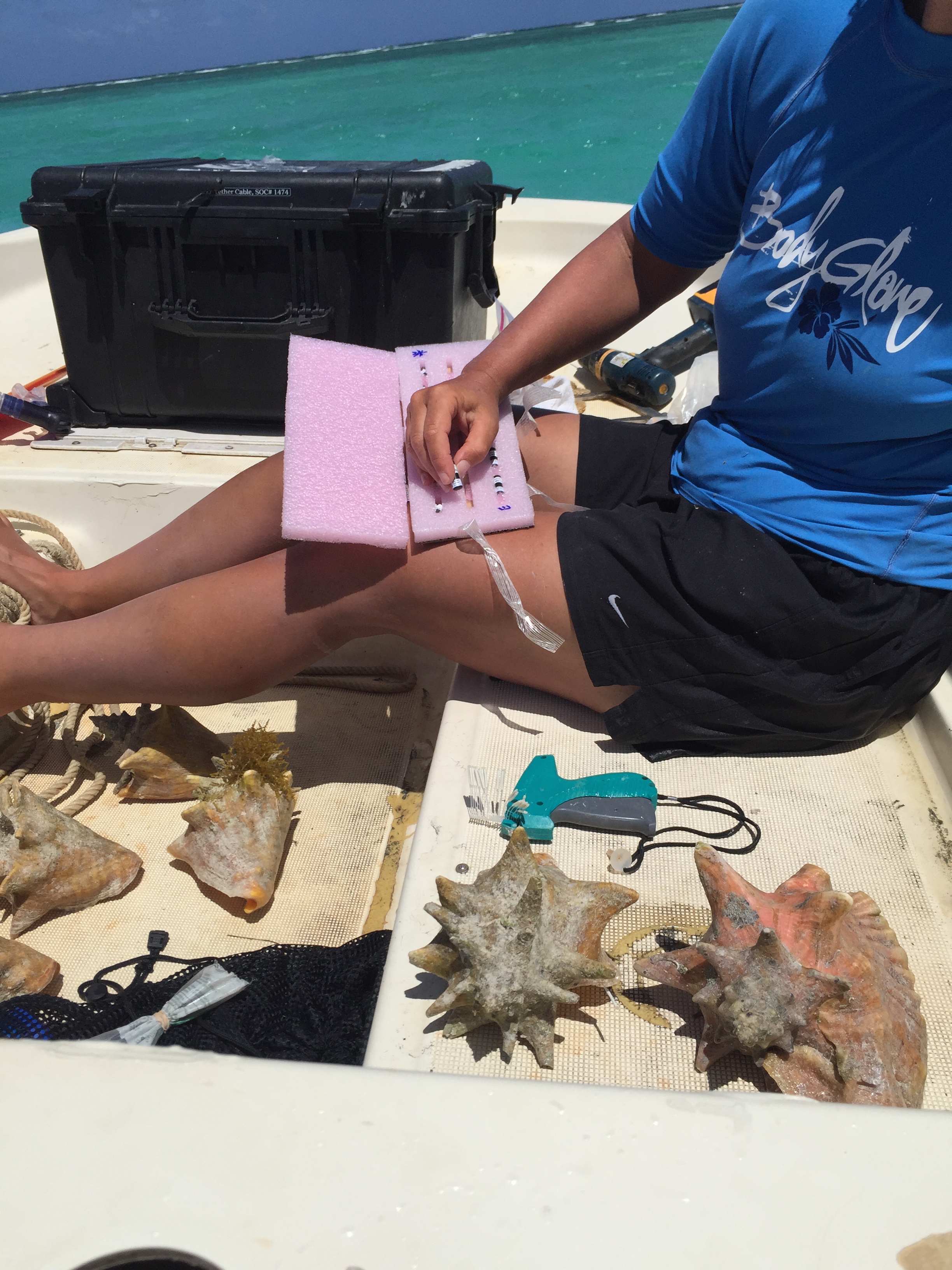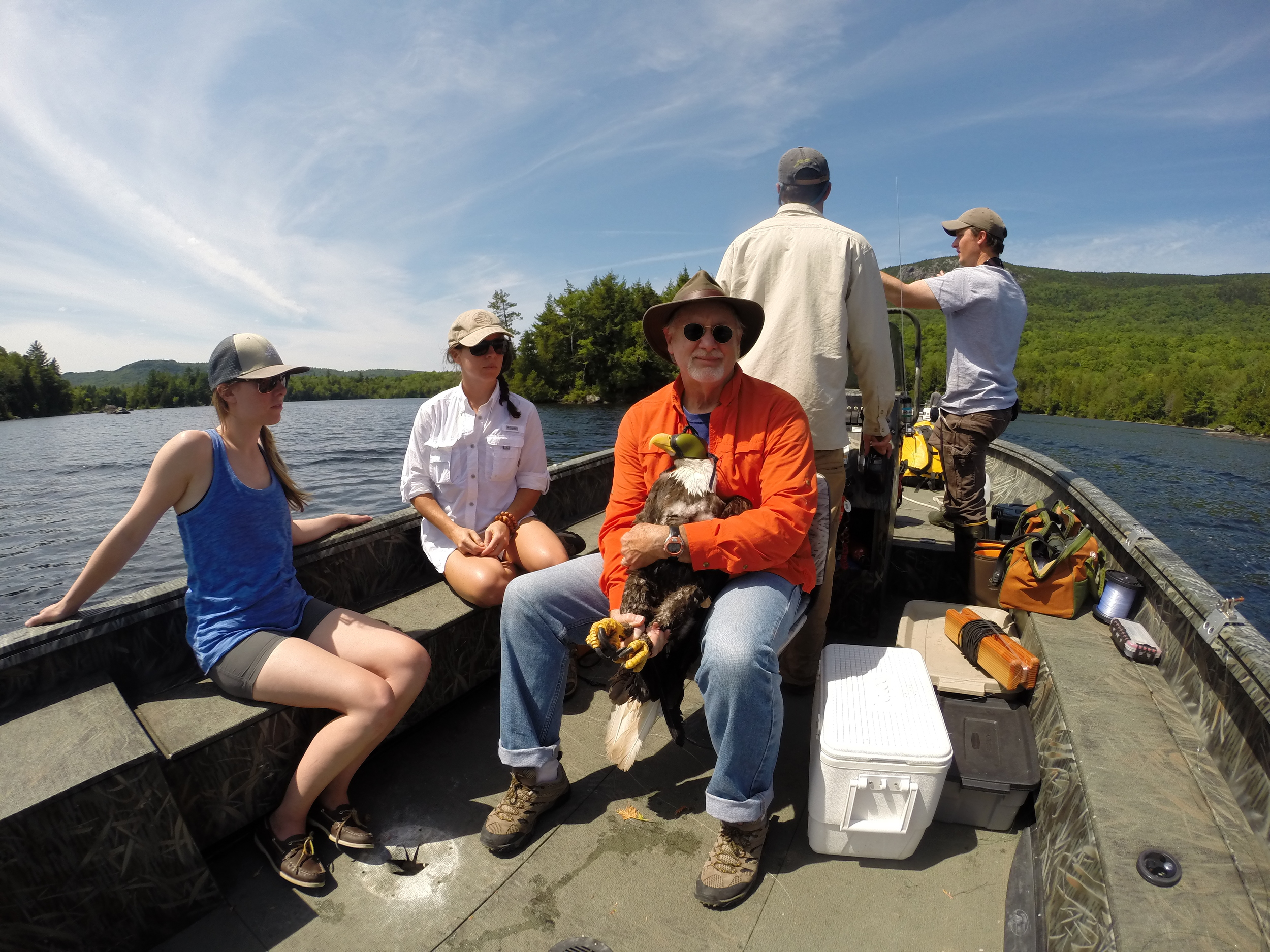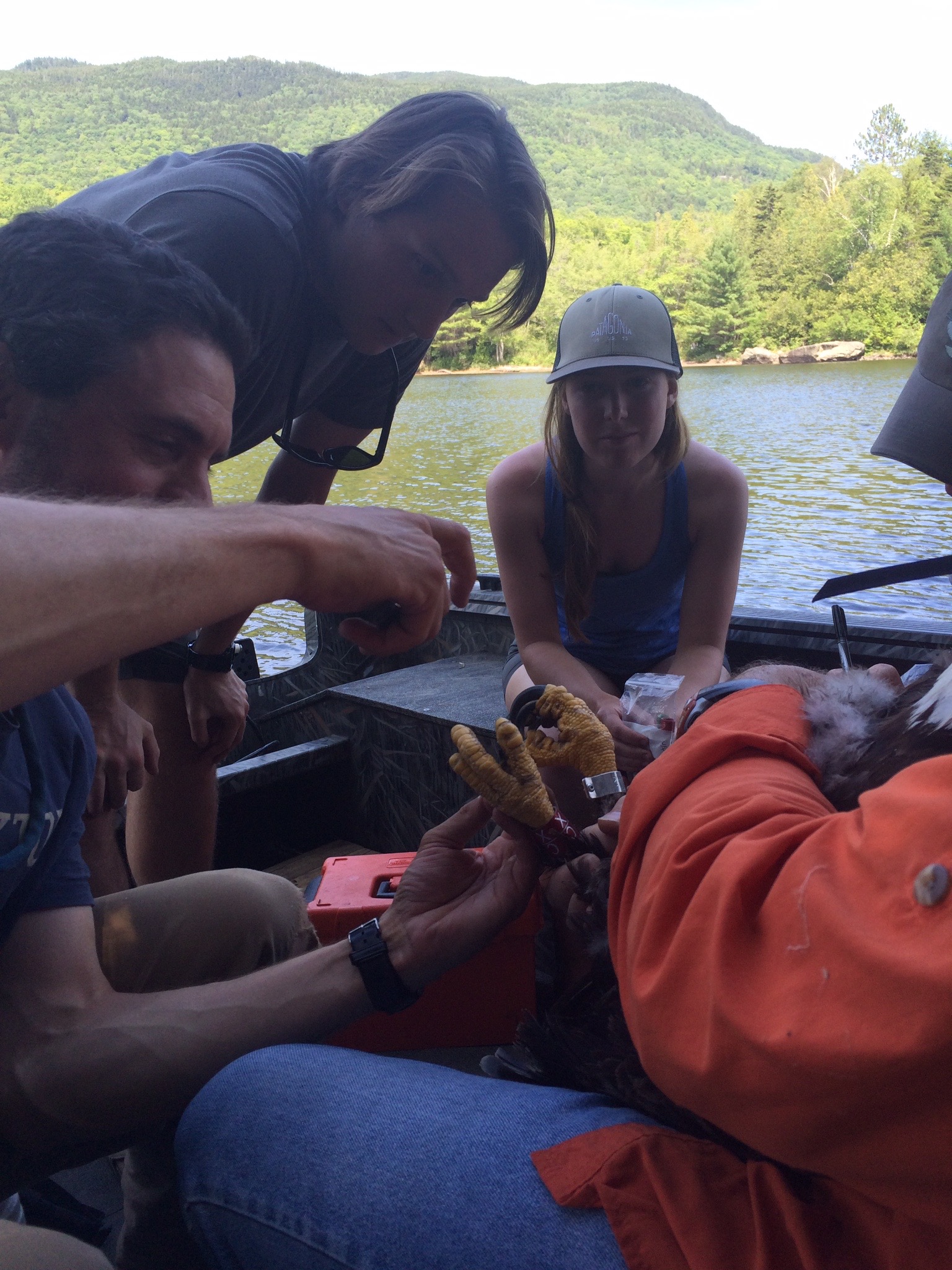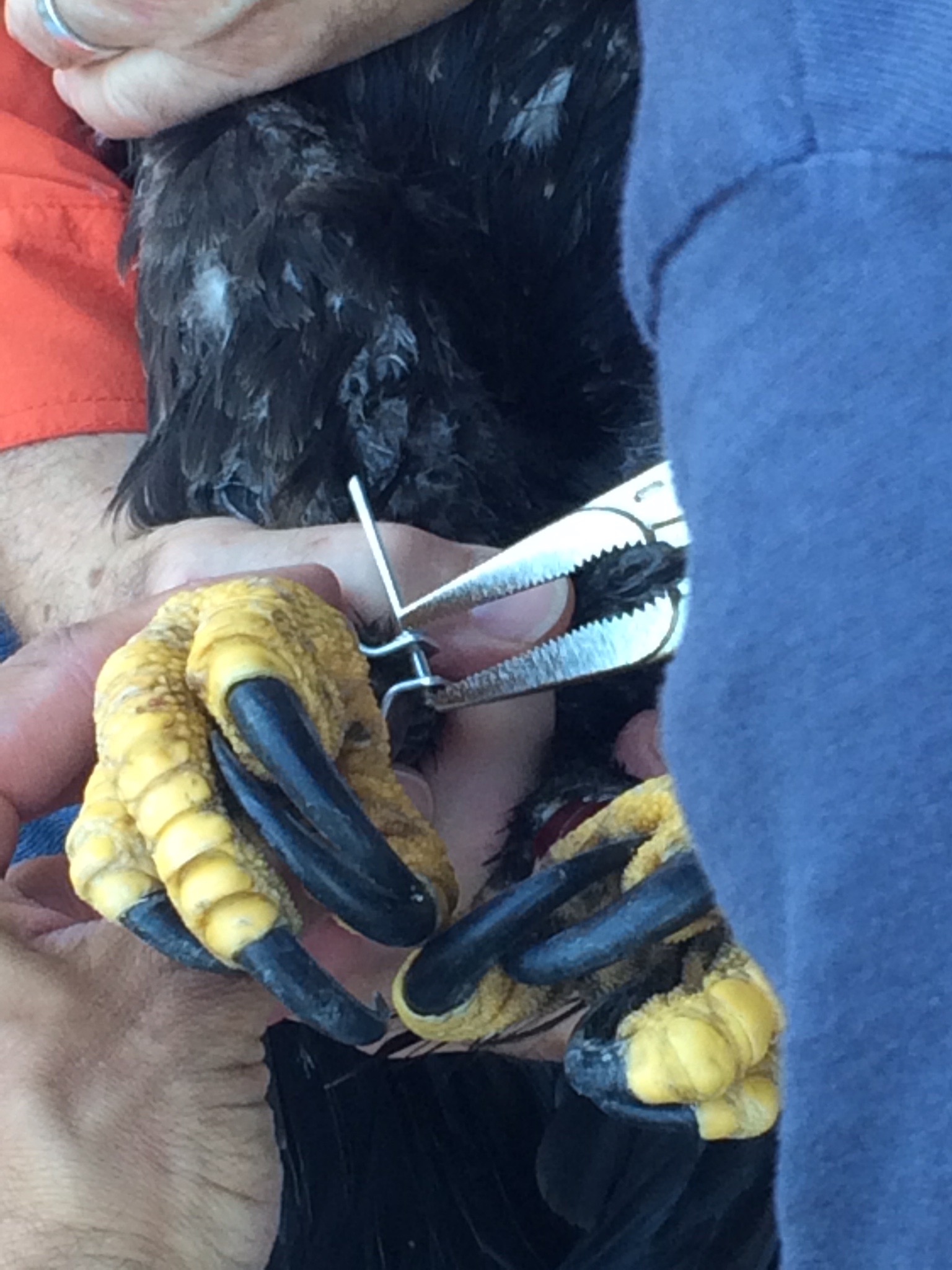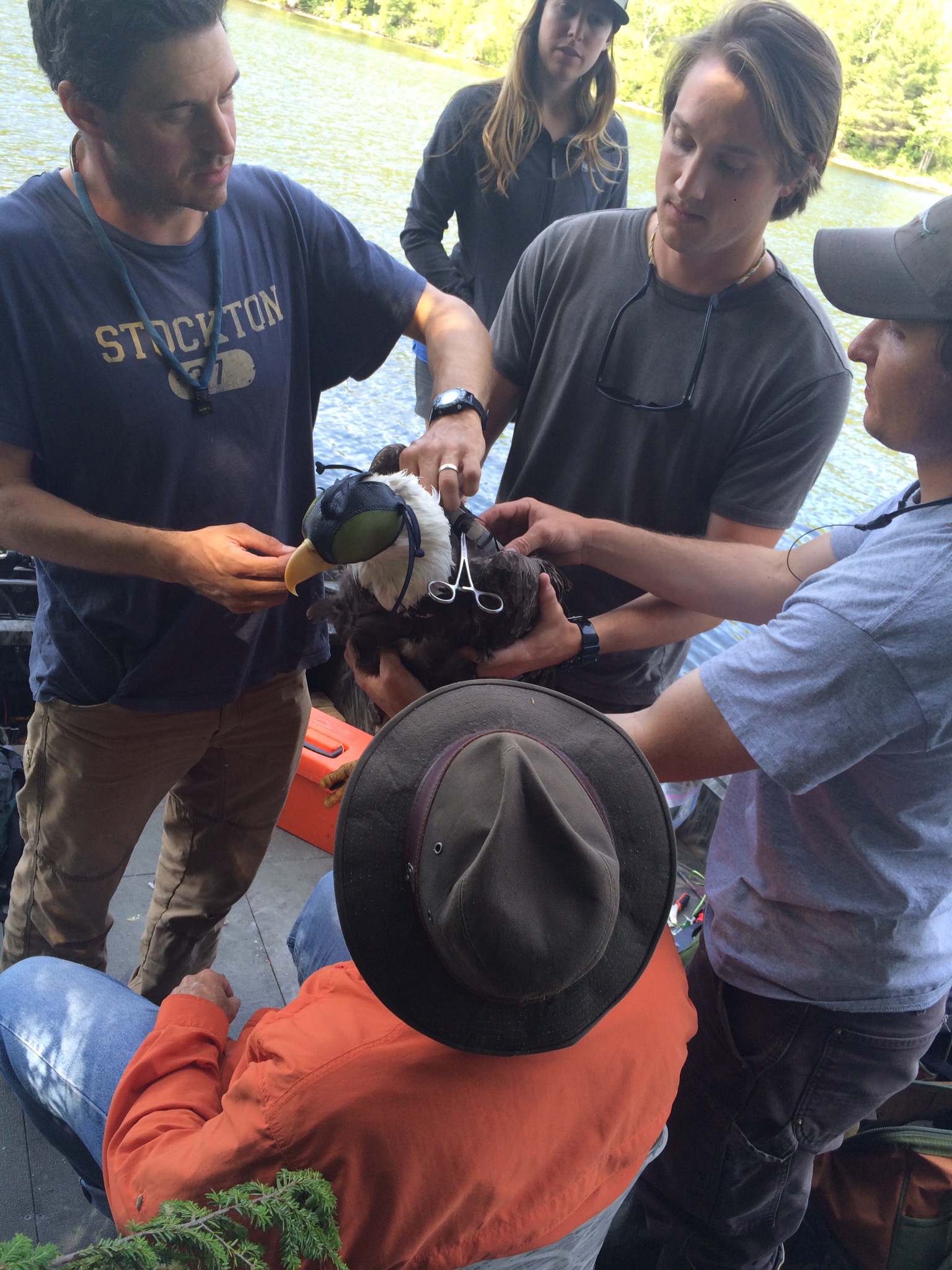Queen conch (Lobatus gigas), a valuable fishery, have suffered region-wide stock depletion and are now considered a species of concern throughout South Florida, The Caribbean, and South America. While numerous factors may be at play in the depletion of conch stocks, over harvest has been recognized to have a significant role. Over the last two years on Culebra, PR, our UMASS team has noticed a multitude of harvesters wading the flats and edges of mangroves collecting piles of conch atop kayaks. Although at a distance, we are often unable to gauge if the gathered conch are deemed legal harvestable size, it is typically assumed these are juvenile conch because adults are seldom found in such shallow water. Only when a conch approaches sexually maturity (~ 3 years), they migrate from shallow developmental habitats to deeper and safer waters. A conch’s life history makes them extremely susceptible to poaching.
For two weeks this August, I accompanied Jennifer Doerr, Dr. Ron Hill, and their team, from the NOAA Galveston Laboratory Fishery Ecology Branch, on conch density and habitat surveys around Culebra, PR. Rarely finding adult conch, our randomly selected surveys around Culebra validated our UMASS team’s original hypothesis about this depleted stock.
We deployed 14 acoustic receivers across two bays; based on the density surveys and degree of “human impact”. We tagged 10 conch in each bay (20 in total) to elucidate the in-season and seasonal movements (i.e., spring into summer), and habitat use differences in impacted and non-impacted areas.
To investigate additional potential contributing factors, we collected benthic core samples that may cue researchers on conch grain size preferences. Considering conch spend a substantial part of their life history in these neritic zones, they may be susceptible to increasing anthropogenic disturbances concentrated along the shoreline and in coastal areas (e.g., sedimentation from mangrove clearing, road construction, etc.).

